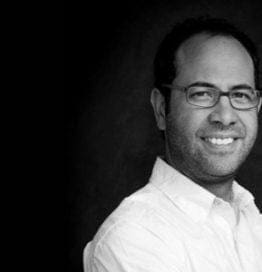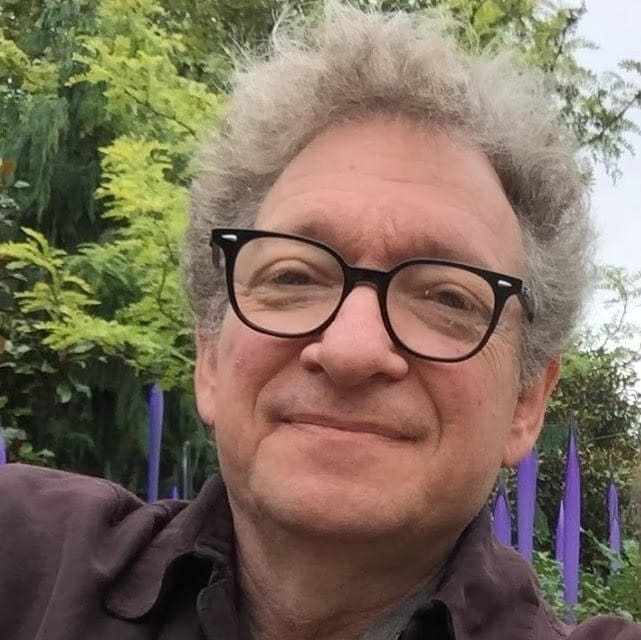Surbana es el nombre que Pablo Serrano eligió para esta entrega exclusiva para hispanicla.com de su más reciente proyecto: el de abstracciones urbanas de Los Angeles: a través de 25 imágenes vemos un Los Angeles condensado, abstracto, concentrado tal como lo ven sus ojos.
El hombre detrás de Surbana
¿Pero qué es lo que vemos? Serrano lo titula: “A distant place”; “Abbreviated portal”, “Urbana Legend”.
Y la respuesta: formas en las calles. Fotografía callejera, un estilo, que, dice Serrano, “está siendo prohibido del medio fotográfico”. Conceptos. Estéticas. ¿Humanas? Sí, porque aunque no aparece, lo suyo está siempre relacionado con lo humano.
“La representación de la gente en la narrativa de la fotografía”, dice Serrano, “es incidental y anónima, porque en lo que estoy interesado en describir es en las huellas poéticas huidizas de la residencia humana”.
Todo es humano. Como Los Angeles, la Trántor del mundo real, la masa de cemento y consumo, tradición y novísimas expresiones metaculturales. Y a través del ojo artista, las imágenes se hacen por la ternura, la exclamación que generan.
¿Cuál es el lugar de la temura, Serrano?
“El sentimiento del sujeto representado es poético, de inventiva, al hacer algo más a partir de las huellas ordinarias de la vida humana.”, dice.
Son formas. Geométricas, geodésicas, terrenales.
Son signos. Parábolas, fábulas, artefactos arqueológicos urbanos, evidencia antropológica que una mente –¿la del artista, la del espectador, otra?- está percibiendo, elaborando, traduciendo, traicionando.
Detras de cada foto, una historia, ¿pero cuál?
La vida cotidiana
La casual, la de la vida cotidiana que de pronto se mira con profundidad, a partir de “la práctica de manejar y disparar accidentalmente”.
Es Los Angeles, un paisaje urbano que, dice Serrano, “ofrece una variedad interminable de oportunidades visuales para explorar, 24 horas al día, siete días por semana”. Para él, Los Angeles es “un lugar fragmentado, insular”. Y va recogiendo los fragmentos y armándolos y dándoles un significado propio.
Lo central en esta serie es “el sentido del lugar”, enfatiza Pablo, y explica: “mi proceso implica escanear el paisaje urbano en busca de sugestiones, reflexiones, yuxtaposiciones y objetos hallados, que se transofrman mediante el proceso fotográfico en metáforas visuales memorables. Las imágenes se doblan y se transmiten por vía de correo electrónico en una base casual y finalmente archivada por número y título. El título es parte integral del trabajo y funciona como desestabilizador, para combinar el humor, la ironía y la poesía en el trabajo”.
Así se acumulan. Cada seis meses, las observaciones de Los Angeles se conciben, se imprimen y producen para su exhibición. A veces hay que volver al mismo lugar donde se percibió ese algo diferente, extraordinario, que cruza de lo cotidiano a lo extraordinario y viceversa. Hay que seguir de cerca los cambios y las “alteraciones del paisaje”.
Allí, encontrará al hombre, quien “está implícito, en las imágenes o de manera incidental en las fotografías. Las imágenes apuntan a las huellas, los restos de la actividad y residencia humana”. Reconstruyendo esas huellas, asume Serrano el puesto de Creador para sus archivos, y de Intérprete – tan inescrutable como explícito – para todo el resto, para nosotros.
Man Behind Surbana
Surbana is the name chosen by Pablo Serrano for this exclusive presentation for hispanicLA of his most recent project: Urban Abstractions of Los Angeles. Through 25 images we see a condensed, abstract LA. concentrated as his eyes see it.
What is it that we see? Serrano calls the images “A distant place”; “Abbreviated portal”, “Urbana Legend” and other names that complement the visual idea.
What we see are shapes in the street. “The photographic series Surbana focus on street photography, a style which is banishing from the medium of photography”, says Serrano. Concepts. Esthetics. Human shapes? Yes, even if they are not physically present, his work is always related with the human presence.
“The human being is implicit in the images or incidental in the photographs. The images point to traces of life activity and traces of human habitation”, says the artist.
Everything in Los Angeles, the real life Trantor, the mass made of concrete and consuming, of tradition and the newest expressions of culture in daily life. Through the artist’s eye the images rely on a sort of tenderness.
Serrano, what is the place of tenderness?
Why tenderness
“The feeling of the subject represented is inventive and poetic, making something out ordinary traces of human habitation”, he says.
Shape and form. geometrical, geodesical, earthly.
Signs. Parables. Fables, artifacts for an urban archeology, anthropological evidence perceived, elaborated, translated, betrayed by a mind. Is it the artist’, the spectator? Somebody else’s?
Behind every photograph, a story. Yes, but what is it?
It is the casual, that of everyday’s life taken under a deeper look, flowing “from the practice of driving by and accidental shooting.”
This is Los Angeles’ urban landscape, which, says Serrano, “offers an endless variety of visual opportunity to explore 24/7.” LA is for him “a fragmented, insular place.” And so he collects and gathers the fragments, assembles them and gives them a meaning of his own.
“Central to the series is the notion of a sense of place”, he asserts, and details:
“My process involves scanning the urban landscape for suggestions, reflections, juxtapositions and found objects, which are transformed through the photographic process into memorable visual metaphors. The images are titled and broadcast via email in an ongoing casual basis and finally archived by work number and title. The title is an integral part of the work and functions as a de-stabilizer to merge humor, irony and poetry in the work.”
As the reservoir of images grows, every six months contact sheets, 8×10 work prints and exhibition prints are produced. Sometimes, he has to go back to the same streets where he perceived that something different crossed from the daily to the extraordinary and back. He likes to closely follow “changes and alterations to the landscape.”
This is where he’ll find the human being, which is always “implicit in the images or incidental in the photographs. The images point to traces of life activity and traces of human habitation.”

